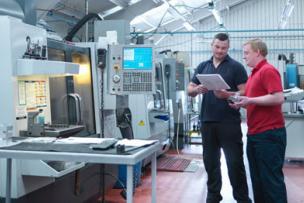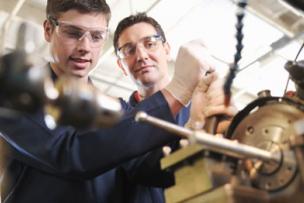Teamwork is essential to any manufacturing operation.

Teamwork is essential to any manufacturing operation. Most experts agree that it is the cornerstone of any successful improvement initiative, and many of today’s industry leaders understand that collaboration and decision-making go hand in hand. From the shop floor to the executive office, everyone’s input carries value.
Unfortunately, building strong teams isn’t as easy as sitting a bunch of people in a room together once a week. As one article from IndustryWeek points out, just because a company works in teams doesn’t mean it is good at teamwork. Simply building a team isn’t enough. The goal has to be building an effective team.
What does this look like in a forging environment? For many companies, it starts with creating a sense of unity. According to an article from Reliable Plant, the goal is to remove the barriers that often exist between the departments by taking a one-plant, one-team approach. Specifically, the trade publication suggests removing any team or function name that directs the function of the team to one specific department or function. For example, change the name of total quality management to total quality manufacturing and then develop improvement teams consisting of personnel from each department within the plant. “This begins to create a common workplace interest and supports a one-plant, one-team environment,” the article states.
Another important step is for managers to consistently ask employees for input and, more importantly, to make some of their ideas a reality. According to the white paper, The Top Five Operational Challenges for Forges that Cut and Process Metal, communicating with shop floor employees and actively including them in operational decisions promotes a team atmosphere, and, therefore, motivates employees to achieve company goals. To see this principle in action, check out this video, which shows one manufacturing floor operator’s reaction to implementing a high-performance team culture in his organization.
An article appearing in the Harvard Business Review confirms that effective teams are hard to build, especially in today’s diverse, dispersed, and digital world. However, it is possible. Quoting research from J. Richard Hackman, a pioneer in the field of organizational behavior who began studying teams in 1970, HBR says there are three “enabling conditions” that lead to strong, thriving teams. The following is a quick summary of those conditions, as described by HBR (You can read the full article here.):
- Compelling direction. The foundation of every great team is a direction that energizes, orients, and engages its members. Teams cannot be inspired if they don’t know what they’re working toward and don’t have explicit goals. Goals should be challenging enough to motivate, and they also must be consequential: People have to care about achieving a goal, whether because they stand to gain extrinsic rewards, like recognition, pay, and promotions; or intrinsic rewards, such as satisfaction and a sense of meaning.
- Strong structure. Teams also need the right mix and number of members, optimally designed tasks and processes, and norms that discourage destructive behavior and promote positive dynamics. High-performing teams include members with a balance of skills. Every individual doesn’t have to possess superlative technical and social skills, but the team overall needs a healthy dose of both.
- Supportive context. Having the right support is the third condition that enables team effectiveness. This includes maintaining a reward system that reinforces good performance, an information system that provides access to the data needed for the work, and an educational system that offers training, and last—but not least—securing the material resources required to do the job, such as funding and technological assistance. While no team ever gets everything it wants, leaders can head off a lot of problems by taking the time to get the essential pieces in place from the start.
The HBR article goes on to describe a fourth condition—shared mindset—which is similar to Reliable Plant’s suggestions for creating a one-plant, one-team environment. This condition requires managers to facilitate shared information among departments and to be intentional about building bridges among team members.
Like any company-wide initiative, building an effective manufacturing team takes time, intention, and a little trial and error. By encouraging unity, fostering collaboration, and implementing strong foundational elements such as diversity and incentives, today’s forges can create a team-centered manufacturing environment that truly benefits everyone.
How are you creating a team environment in your operation?
Previously featured on Blog.LenoxTools.com.




Talk to Us!
Leave a reply
Your email address will not be published. Required fields are marked *